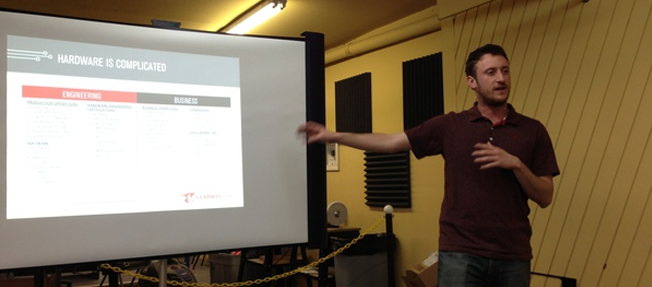
We know that there are a lot of benefits for hardware makers running an Indiegogo campaign, but what about after the campaign ends? To help address this question we teamed up with our partner, Lemnos Labs, to host “From Prototype to Product,” a meetup in San Francisco (Indiegogo’s neighborhood) designed to help hardware makers succeed as they graduate from Indiegogo to broader production. Speakers included Jeremy Conrad, founder of Lemnos Labs, and Christian Smith, founder of Phone Halo (currently running the Button TrackR campaign).
The big takeaways:
-
When you create a hardware campaign take the entire cycle of a product into account; from components -> sub assemblies -> final assembly -> packaging/ shipping -> reverse logistics
-
Crowdfunding is not selling, it’s generating shared enthusiasm. You’re creating a community of people who believe in you and the real and awesome product you’re bringing into the world.
Key questions to answer before you start your Indiegogo campaign:
-
What level of success you are prepared to handle?
-
Producing 100 units of a product has different requirements than producing 1,000 units.
-
-
Who’s the most excited for your product to launch?
-
Ensure that you have compiled a solid email list of the people most passionate about your product who are lined up to contribute early and help spread the word. This will help build the initial momentum for your campaign to take off. (Here are resources to help build and manage your email list).
-
-
What are your production costs?
-
Have your numbers checked by someone who has done this before. Hidden costs can kill you, so be sure to consider poor yield, vendor travel costs, etc.
-
-
What is your price point?
-
While crowdfunding allows you to test pricing, be sure to research consumer price points before you start your campaign. A good rule of thumb is 2.5% the transformed cost.
-
-
What else?
-
Nothing will go as planned, so be sure to add 30-40% to your costs and schedule.
-
I (@KateDrane) love to help, so once you’ve answered those questions, hit me up on Twitter.
If you are looking for more reading, Jeremy recommends checking out Phil Baker’s book “From Concept to Consumer: How to Turn Ideas Into Money.”
Stay tuned for our next hardware meetup by joining our Meetup group. In the meantime, got more tips? Sound off in the comments!
One Response
You must be logged in to post a comment.




Great topic. You might find the book I wrote called ‘From Prototype to Product – A Practical Guide for Electronic Engineers’. Keen to help anyone who wants to make things. This book is available as Kindle and Paperback on Amazon.